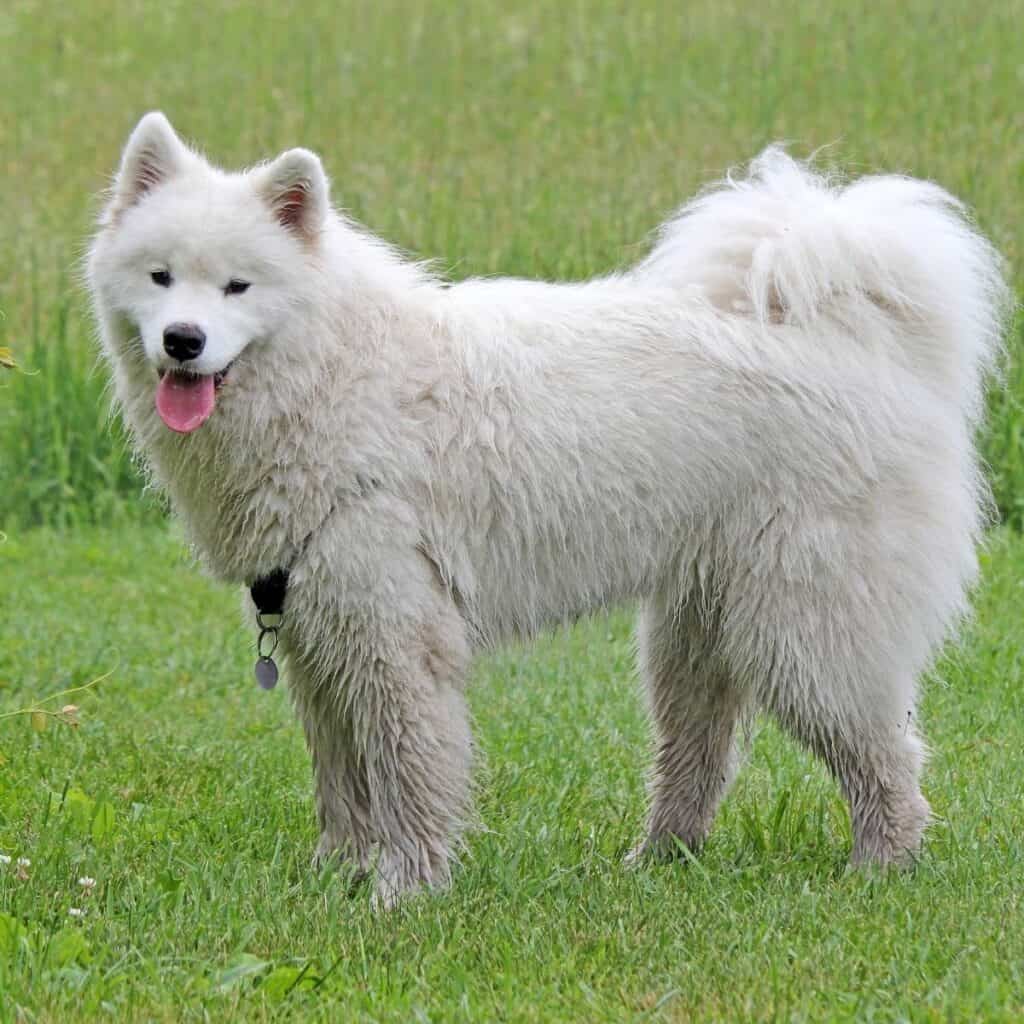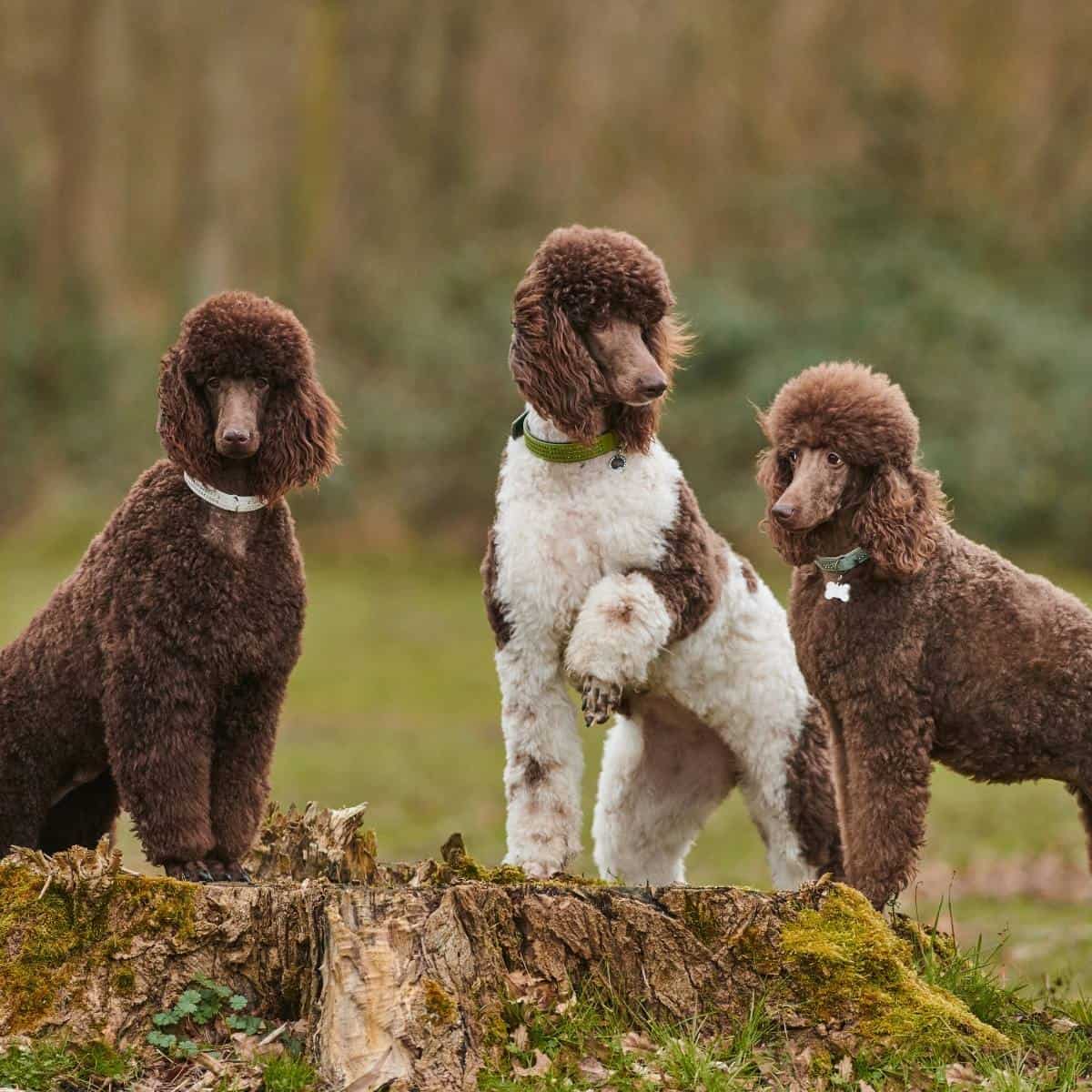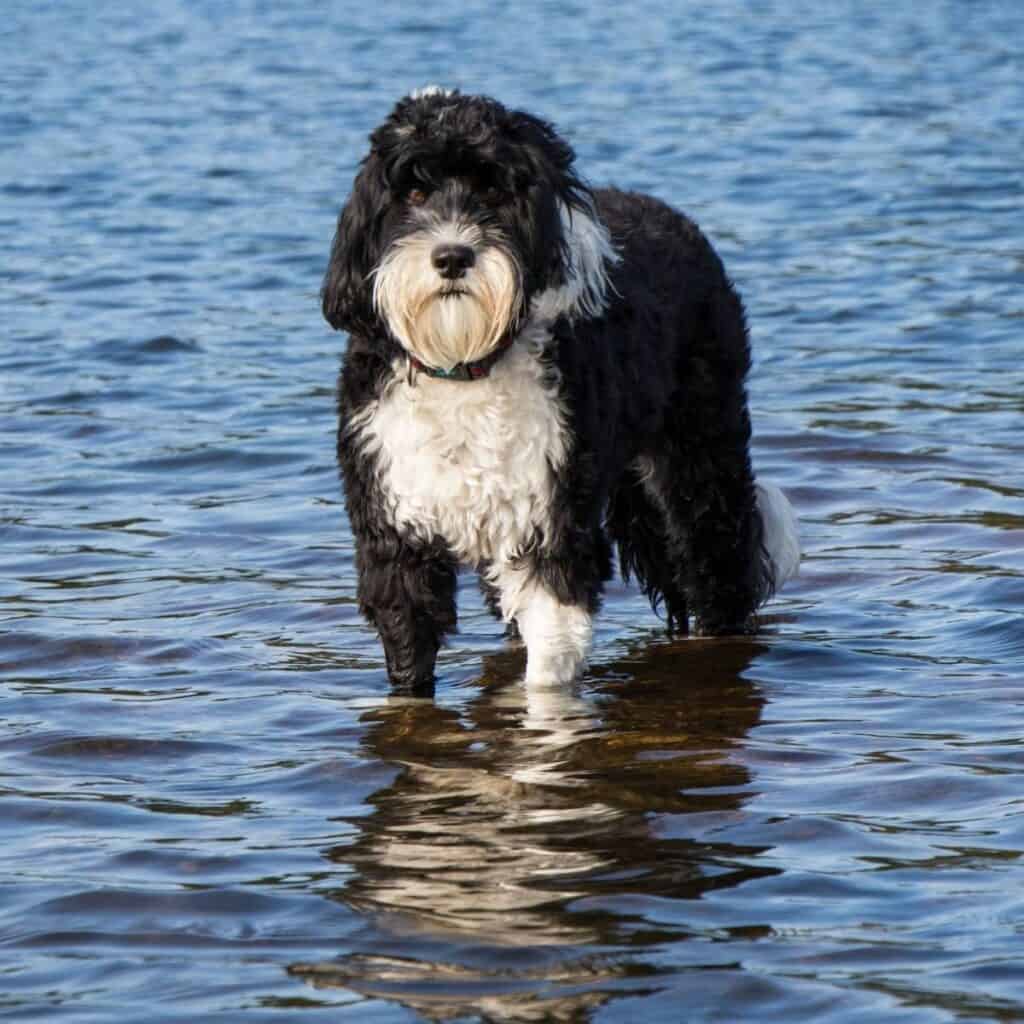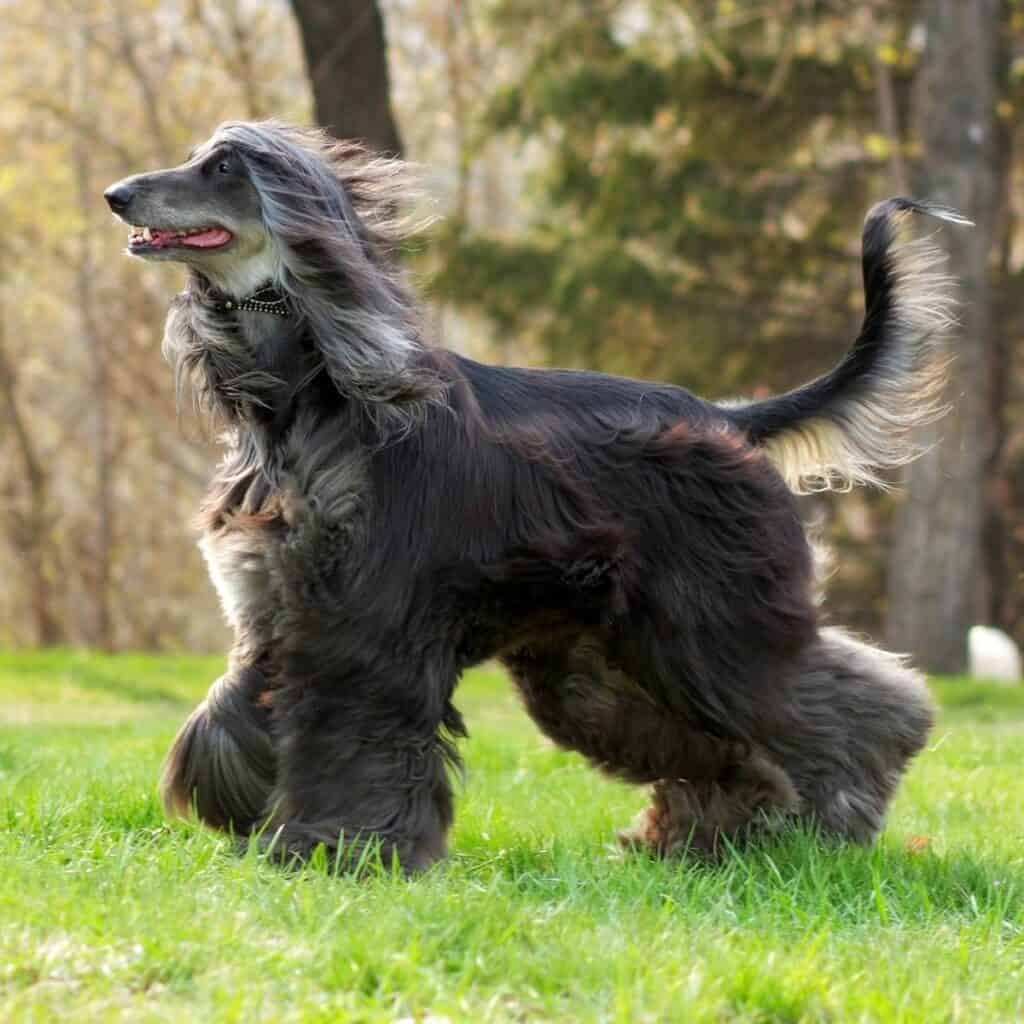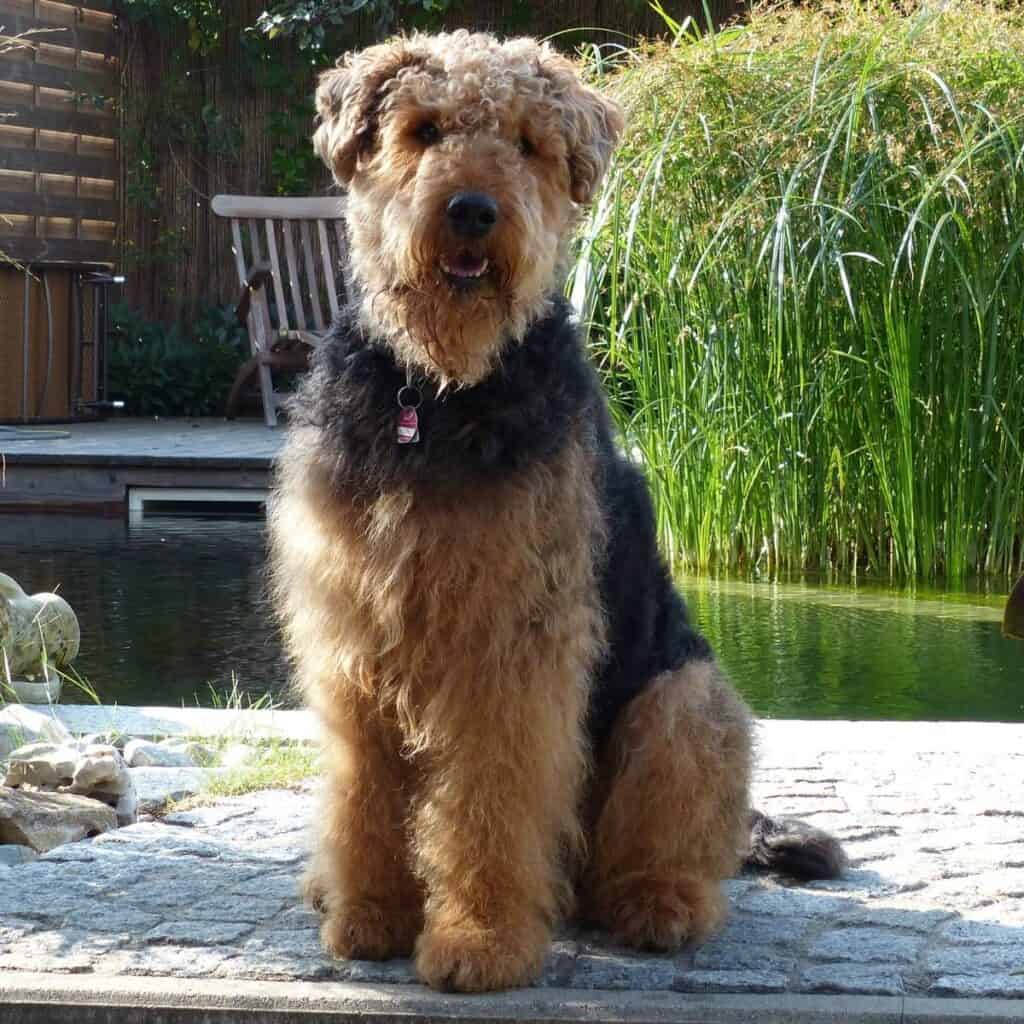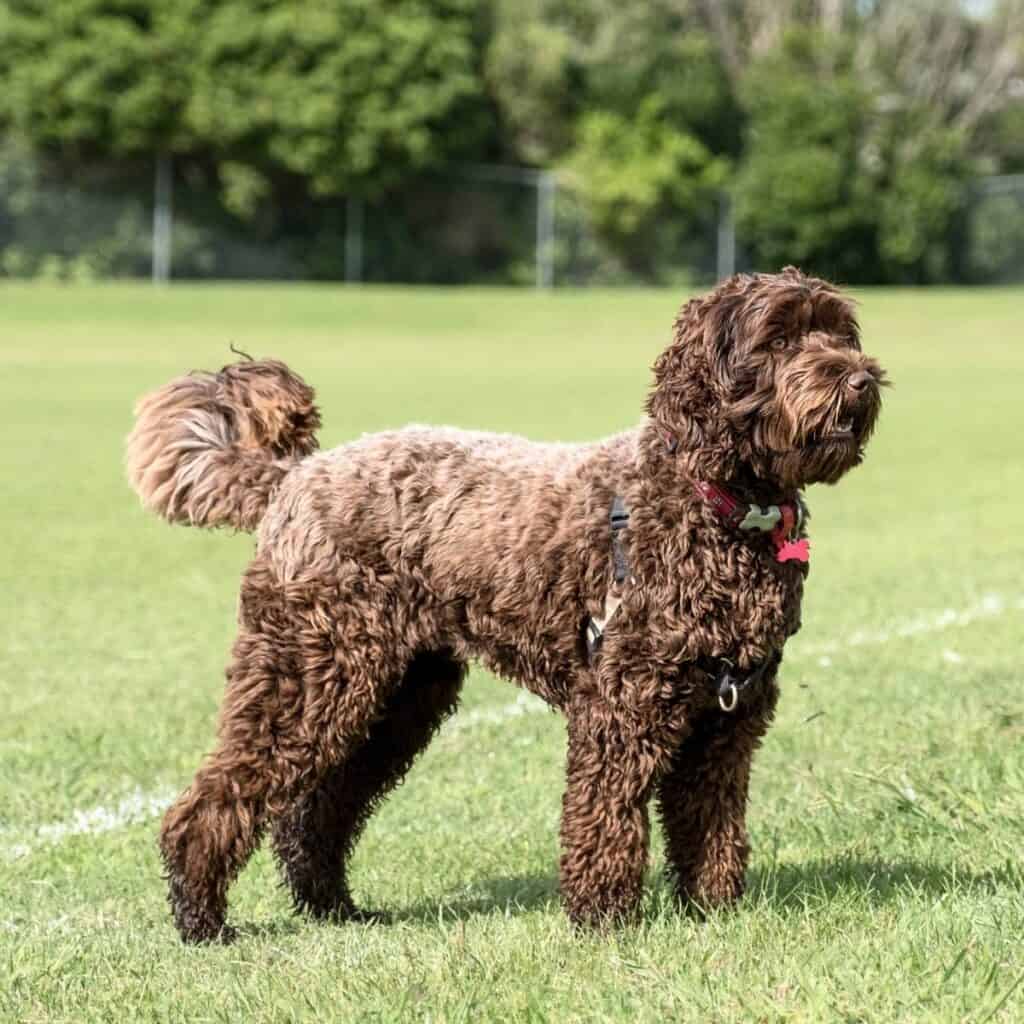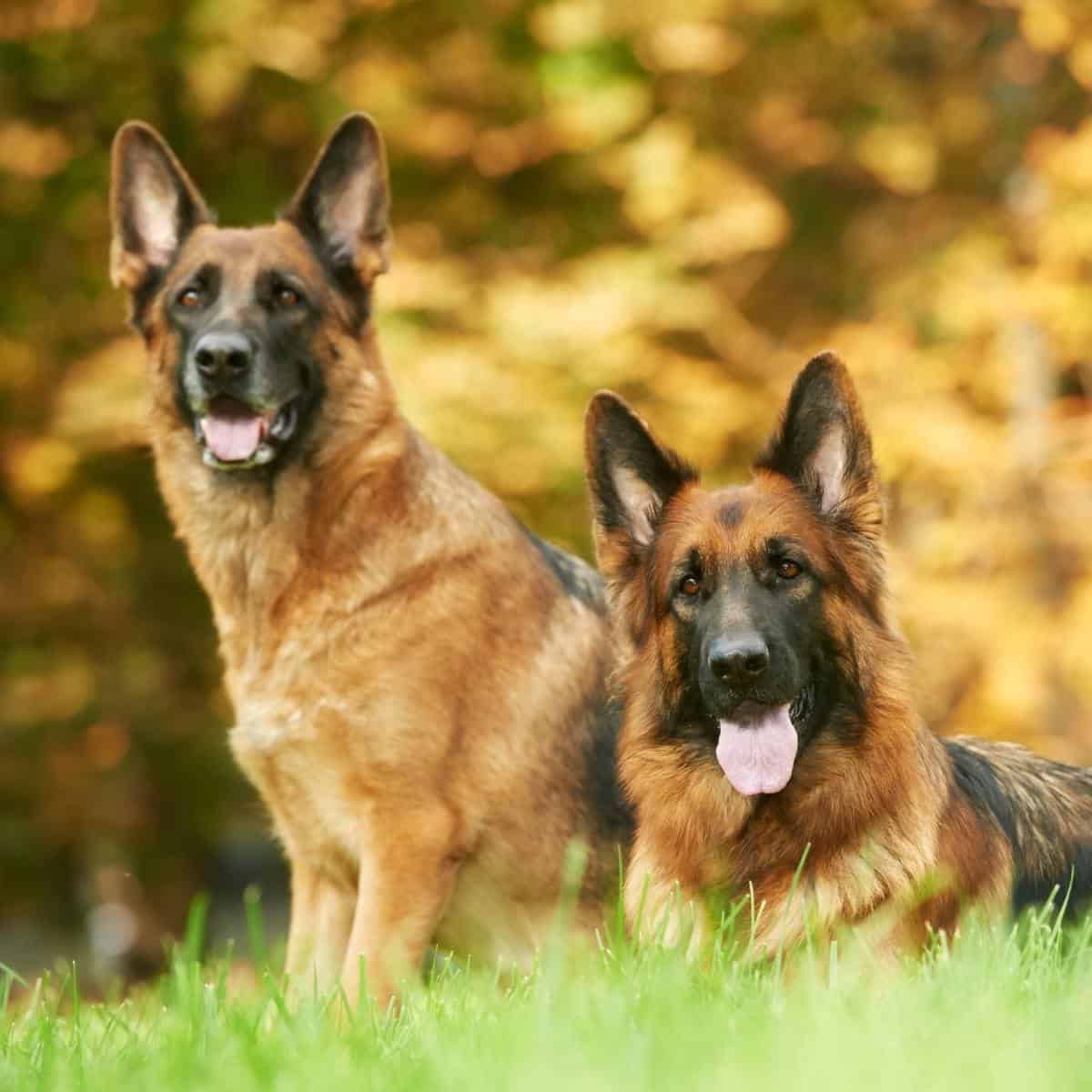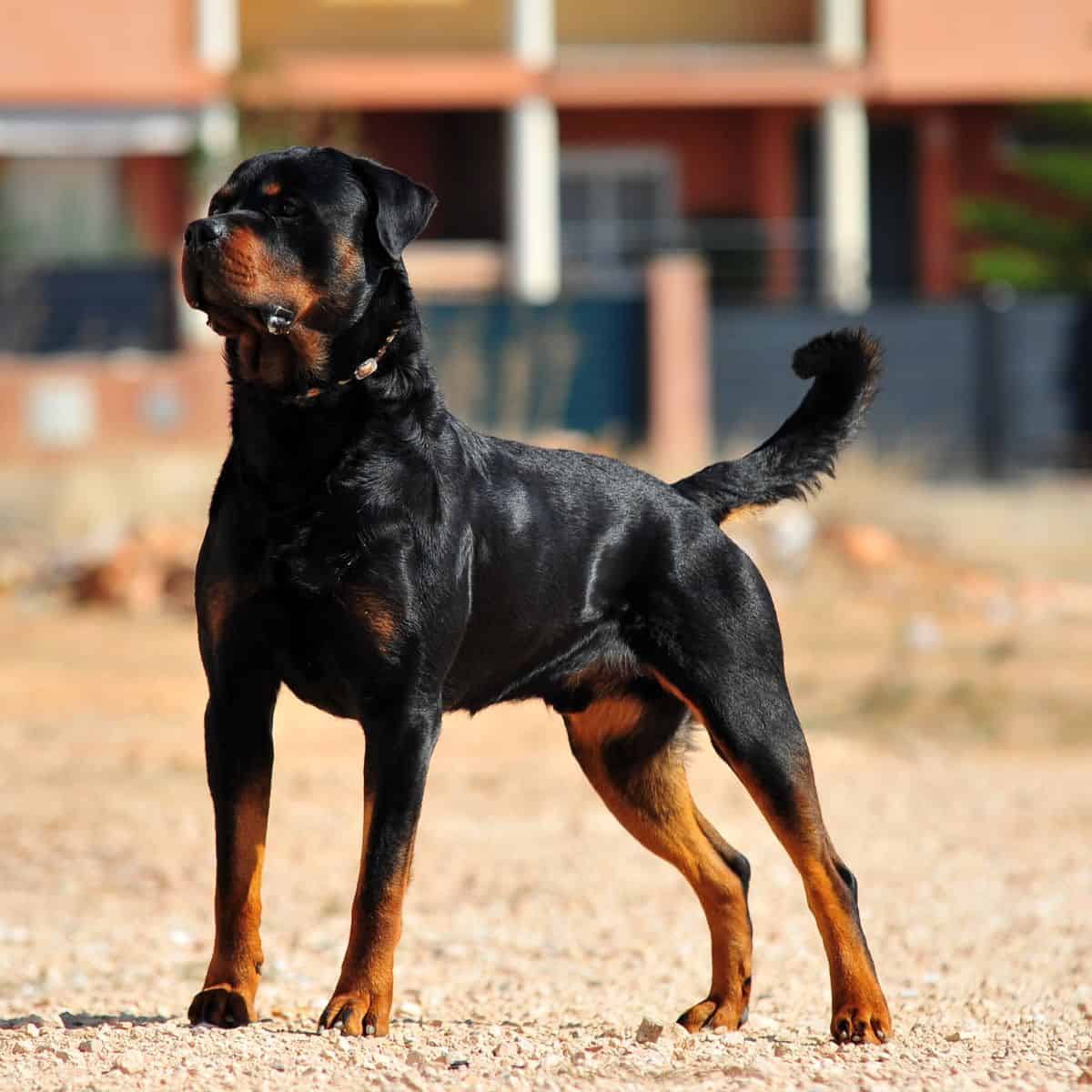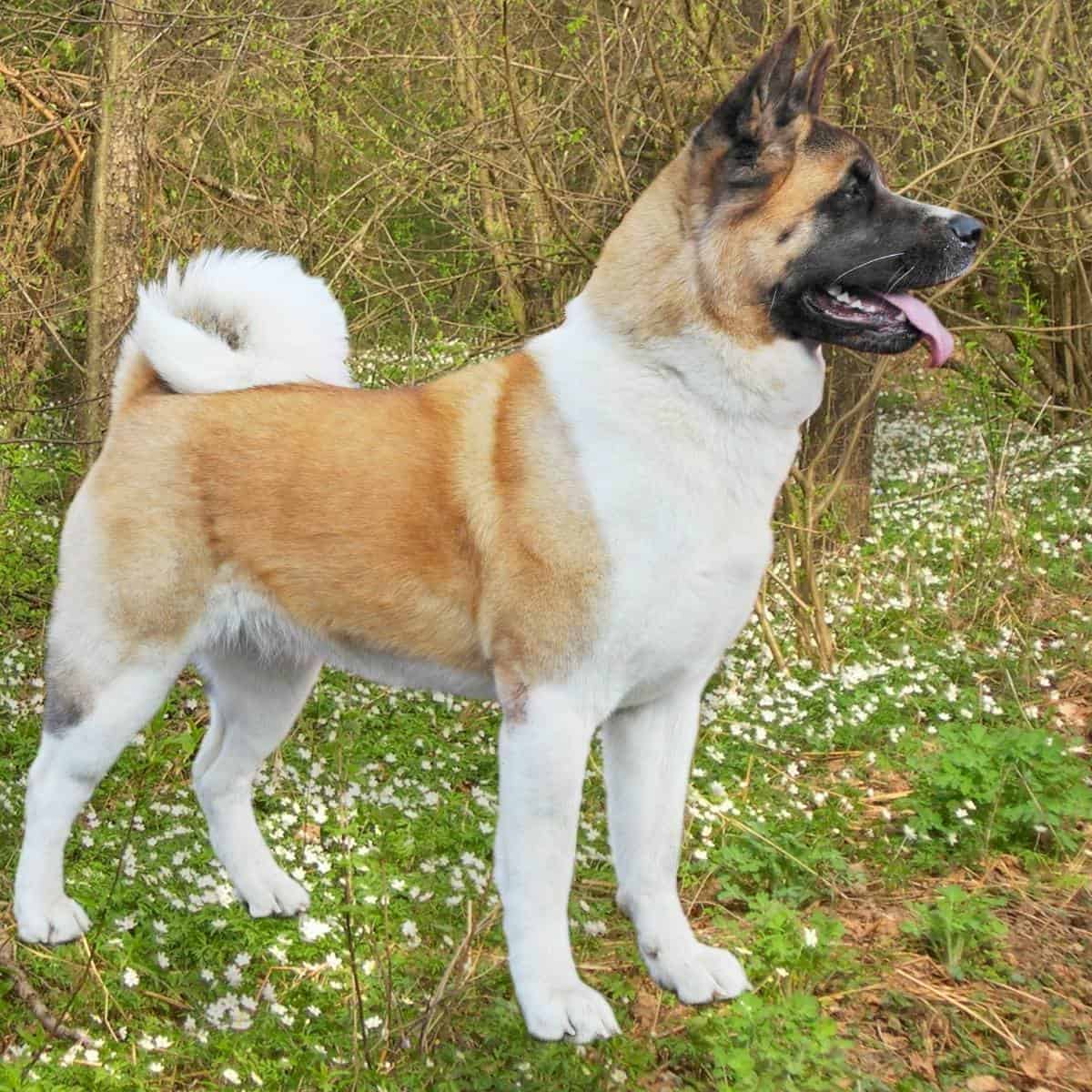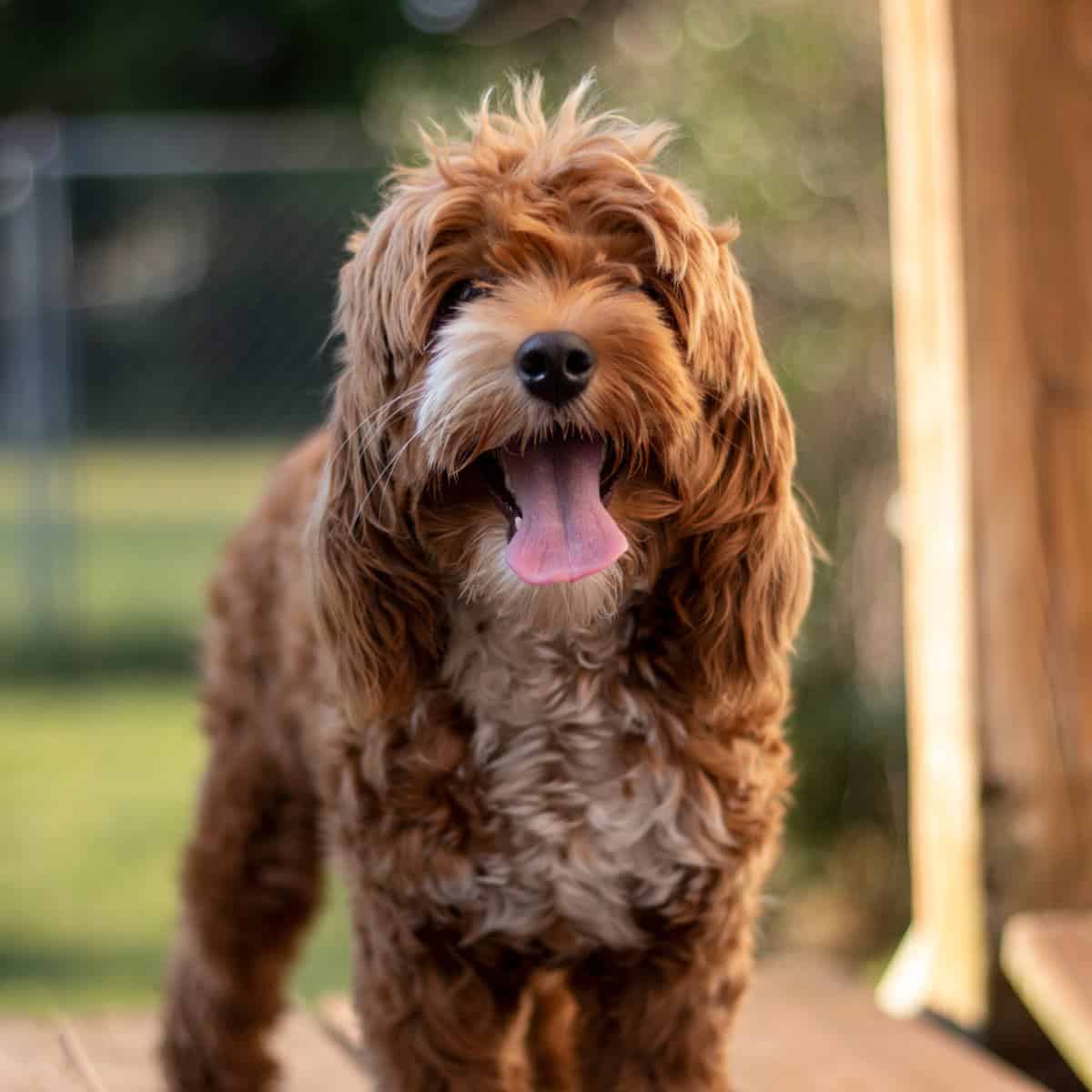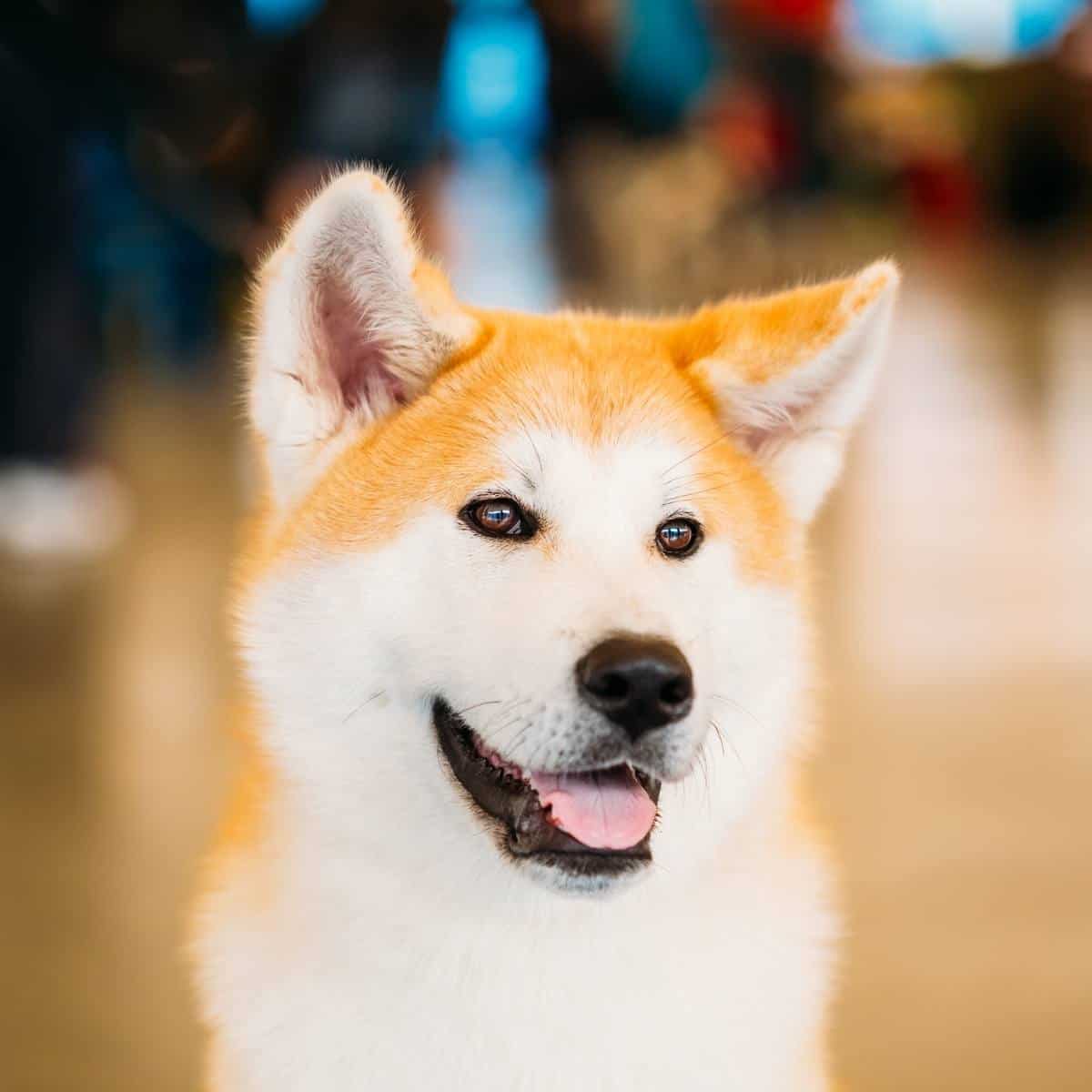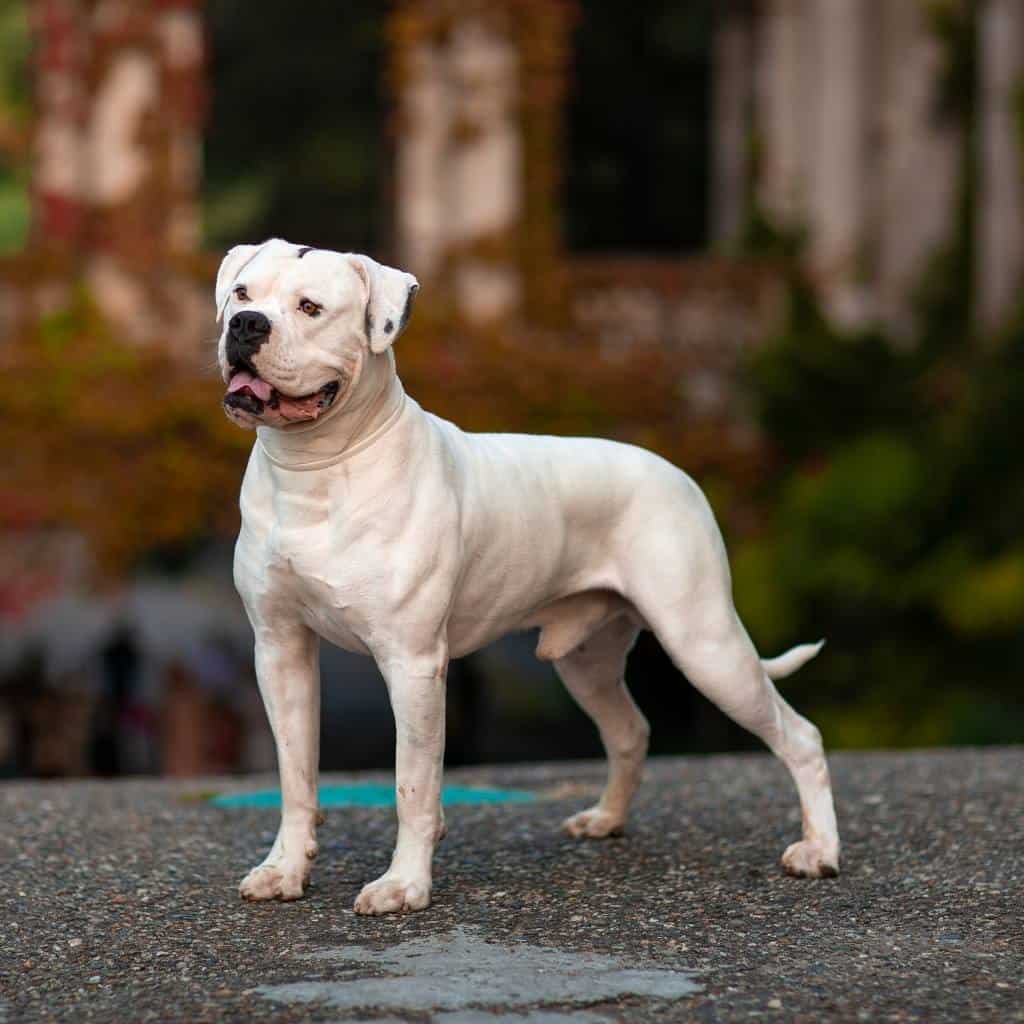The Best Large Hypoallergenic Dogs
As many as 30% of people in the United States alone have some kind of pet allergy, and that makes it difficult for some dog lovers to adopt a dog of their own. Can those with allergies still enjoy the companionship of a large hypoallergenic dog?
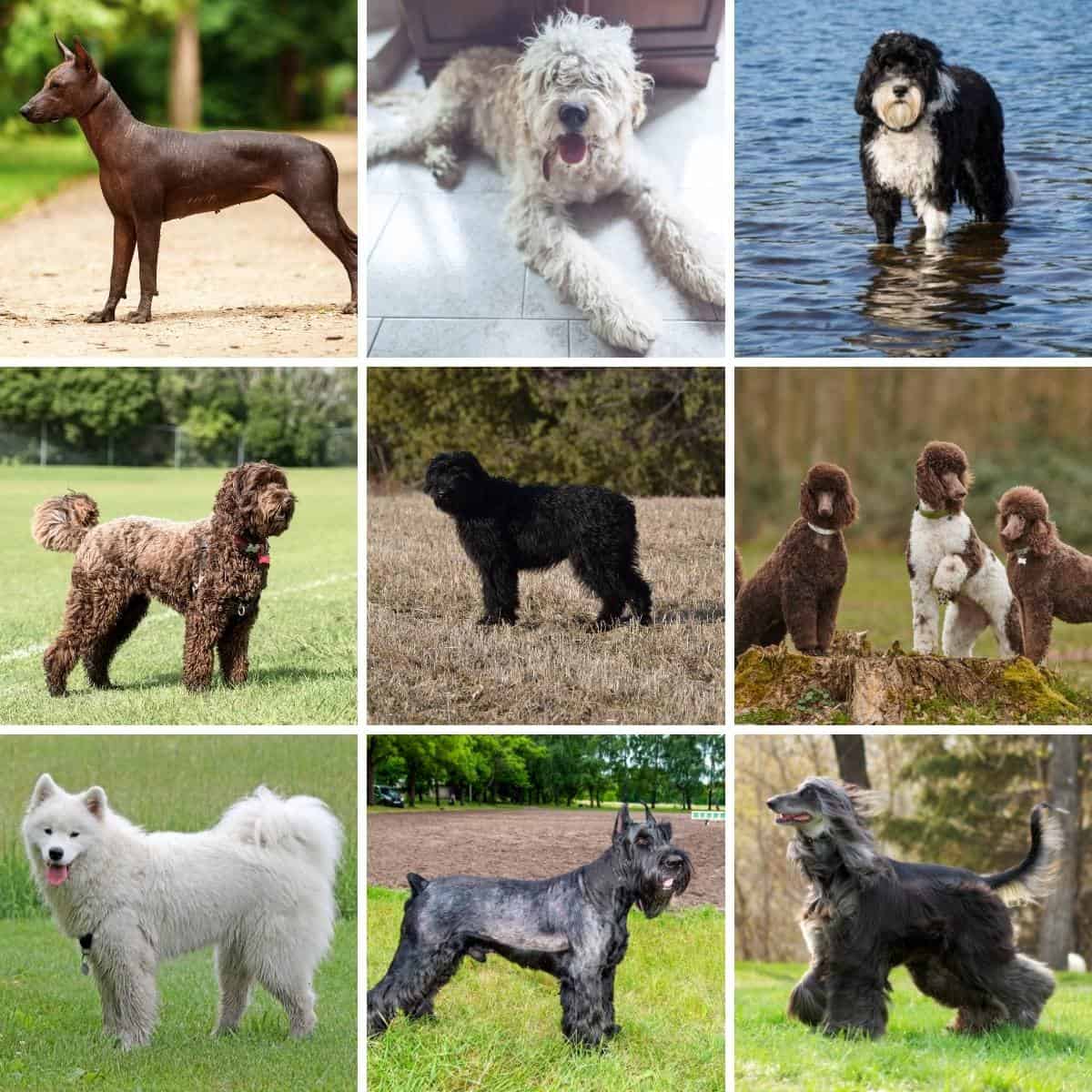
While there are no true allergy-free dogs, hypoallergenic dogs can make pet parenthood possible for those who suffer from pet-related allergies.
These are also great breeds to have around the house if you a looking for a low shedder, so cleaning is easier to maintain.
What Does It Mean If My Dog Is Hypoallergenic?
Hypoallergenic dogs are typically low to no-shed dog breeds that are better suited for those that suffer from pet hair and pet dander allergies.
When someone has a pet allergy, their immune system is responding to the dander and protein allergen that’s attached to the dog’s dander, not the fur itself.
While the fur isn’t the main issue, dogs that shed less also release less dander and protein allergens into the air. This reduces potential irritants for allergy-sufferers.
These dogs still carry the protein and dander associated with pet allergies, but they’re less efficient at spreading it than dogs that shed more.
Some dog breeds also naturally have less dander and the protein responsible for most pet allergies, making them less likely to cause an allergic reaction.
Is Hypoallergenic the Same Thing as Non-Shedding
Dogs that are non-shedding aren’t necessarily hypoallergenic.
The allergies come from the pet dander and protein allergens and not from the dog’s actual fur. Even though a specific dog may shed very little, they may still carry a high amount of pet dander that can irritate the respiratory system of someone with pet allergies.
Many non-shedding dogs are hypoallergenic, but it’s not always the case. The only dogs who do not shed are those without hair. This includes the American Hairless Terrier, Peruvian Inca Orchid, and Xoloitzcuintli.
Do Hypoallergenic Dogs Have Hair or Fur?
Hypoallergenic dogs often have low-shed single coats that feel more like hair than thick fur. Because of the single coat, these dogs have minimal shed and minimal chance to spread pet dander.
Hairless dog breeds can also be hypoallergenic, as they have no fur to hold on to allergens and pet dander.
Do Hypoallergenic Puppies Shed?
Just as there are no true allergy-free dogs, there are also no dog breeds that don’t shed at all. Hypoallergenic breeds are often considered low-shed or no-shed, but they may still shed some fur in very small quantities.
If your hypoallergenic puppy is excessively shedding, it’s best to contact your local vet to see if there’s an underlying health condition causing hair loss.
We have a mini golden doodle and I love that we don’t have piles of dog hair everywhere! Occasionally we lent roll our furniture just to catch the strays. We also use a wet comb and slicker brush that has been working wonders for grooming. Because her coat is so thick, we have been spraying her with the Burt’s Bee’s detangler before brushing that helps a lot!
Are There Any Big Hypoallergenic Dogs?
There are a wide variety of big dog breeds that are considered hypoallergenic, including Portuguese Water Dogs, Afghan Hounds, and Labradoodles.
There’s debate among many dog communities about what is considered a big dog, so this list may not be inclusive of all the big breeds. Many authorities, like Chewy, for example, consider big or large dogs to be between 50-90lbs at their full, adult size and around 24 inches.
Keep that distinction in mind as you explore this list.
The Best Large Hypoallergenic Dogs
Giant Schnauzer
Giant Schnauzers are working dogs that grow to be an average of 65-90 pounds and up to 27 inches tall. They have a dense, wiry double coat that requires regular maintenance to stay soft and healthy. Despite their double coat, these dogs are shed very little.
They are one of the few breeds that have a beard, are very intelligent, and loyal to their families. Most do not recommend this breed for those who live in apartments or have small children due to their size and temperament.
Samoyed
Samoyed, also affectionately called Sammies, are sled dogs that can grow from 19-23 inches tall and 45-60 pounds. They have thick, double-layered coats and are considered heavy shedders, but they carry little pet dander, still making them hypoallergenic.
This breed falls into the working group, so they love it when they get to do chores. Because of their smarts they are easily trainable but can be a little stubborn and independent at times.
Standard Poodle
While these dogs are sometimes classified as a medium-sized breed, their average weight and height make many people consider them big dogs. Standard poodles are typically 18-24 inches and 40-70 pounds. They have a single-layered, dense coat of curly fur and they shed very little.
There is also the moyen poodle that is medium-sized, but still classified as standard according to the AKC. Poodles are still susceptible to fleas in case you were wondering.
Portuguese Water Dog
Just like Poodles, these dogs are considered a medium breed by AKC, but their weight and height qualify them as big dogs for many pet owners. On average, they weigh 35-60 pounds, and they’re typically 17-22 inches tall.
Portuguese Water Dogs can have 2 varieties of fur: densely curly and shiny waves. They do not have an undercoat which makes them a “no shed” breed.
Afghan Hound
Afghan Hounds grow to be an average of 25-27 inches and 50-60 pounds. they have long, silky coats that require regular brushing and maintenance to keep it free of mats and tangles.
They have no undercoat, and their fur more closely resembles human hair, making them a low-shed breed. Even though they look fancy and boujee, they were originally bred for hunting. Would you believe that they can run up to 40 mph?
Airedale Terrier
On average, an Airedale Terrier will be about 23 inches tall and anywhere from 50-70 pounds. Their short, wiry coats require very little maintenance, and they shed very little, making them a great hypoallergenic choice.
These are some of the largest in the terrier family and have been used in police work. Fun fact, John Wayne got his nickname (Duke) from the Airedale terrier he owned as a child.
Italian Water Dog aka Lagotto Romagnolo
Italian Water Dogs can be anywhere from 16-19 inches tall, and 24-35 pounds, depending on their gender. They’re known for their thick, tight curls that cover their entire body. Their curls are made of hair and not fur, reducing their shedding significantly.
While this breed is rare in America, Italy holds these dogs near and dear. They are some of the oldest in the country and were bred for hunting around the lakes.
Doodles
These adorable breeds are a mixture of Poodle and Retriever, and popular variations include Labradoodle, Golden Doodle, Bernedoodle, and Aussiedoodles. These dogs can be anywhere from 15 to 25 inches tall and 40-100 pounds, depending on the breed mixtures.
While the type of coat that a Doodle has will depend on its unique gene makeup, many doodles have curly, single-layered coats from their Poodle genes.
Bouvier Des Flandres
These dogs tend to be 23.5-27.5 inches tall and 70-110 pounds. They have weather-resistant, dense double-layered fur that requires regular brushing to prevent mats.
Despite their thick coats, they are minimal shedders. Similar to a Poodle, they tend to only lose their fur when you brush them. Even those these are huge dogs, they love kids and other pets as long as they grow up around them. Oddly enough, this is a pretty calm breed.
Xoloitzcuintli
This ancient breed dates back to the Aztecs, and they are found in 3 varieties. The largest variety, known as the Standard Xoloitzcuintli, is typically 18-23 inches tall and 30-55 pounds.
Though there is a coated variety, the majority of Xoloitzcuintles are hairless, making them an excellent choice for those with pet allergies. The lack of fur also means low maintenance grooming routines.
Hypoallergenic Dogs for Adoption
If you’re interested in adopting a large breed hypoallergenic dog, there are a variety of rescues available across the country. While it’s possible that you could find the breed of your choice in your local shelter, breed-specific rescues can give you a larger selection.
A few well-vetted, hypoallergenic large-breed specific rescues include:
- Poodle Club of America
- Portuguese Water Dog Club of America Rescue
- Airedale Terrier Rescue and Adoption (ATRA)
- Valley of the Sun Giant Schnauzer Rescue
For those with dog allergies that stand in their way of adopting the dog of their dreams, hypoallergenic dogs can be a great choice. While there is no way to completely eliminate their allergens, hypoallergenic dogs are a great low-shed, minimal-allergen option.
Common FAQs
That would be the Giant Schnauzer we featured earlier, coming in at 90 pounds.
The Bichon Frise is considered hypoallergenic and rarely weighs over 6 to 8 pounds. There are other small breeds like the Chinese Crest, Yorkie, and Westie dog that weigh around 8 or 9 pounds when full grown.
The award goes to the Poodle as usual when it comes to intelligence.

